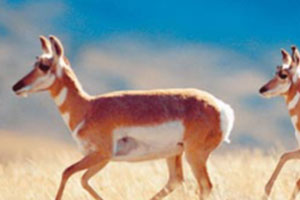Temperate biomes are represented by temperate forests and grasslands. They take up topographic positions that go from the low lands to the mountain tops, and the environmental conditions vary from medium warm and semi-arid to cold and humid. The climate changes significantly from summer to winter. The average annual temperature is 23°C.
Temperate forests are found in the entire European continent and the eastern regions of Asia (China and Japan) and North America. They are also in some temperate areas of South America (like Chile and Argentina) and in some zones of Oceania. The vegetation is predominately arborous, although there are also bushes and herbaceous plants. In some places, coniferous forests are predominate; in others, the deciduous or ephemeral and mixed forests.
The fauna presents several kinds of seasonal adaptations. In some areas, a high proportion of birds migrate from the north to the south during winter (characterized by the lack of food and low temperatures), while some mammals hibernate. This forest is one of the most altered on the planet because most of the world’s population is concentrated in these areas. This has meant hat Man is devastating the conifers, be it for agricultural (using the soil for crops) or foresting ends (wood and other products).
Temperate grasslands develop in the center of the continents in intermediate regions between the temperate forests and the deserts. They are found in five specific areas: the American grassland (the south of Canada, center of the U.S.A. and the north of Mexico), the steppe of central Eurasia, the south African veld or belt, the Argentinean pampas and the Australian grassland.
In general, temperate grasslands share a climate characterized by precipitations of between 250 and 800 mm a year and extreme periodic droughts. The most representative vertebrate animals are ungulates (whose limbs end in hooves), browsers (they feed on herbs, grasses and other plants) and diggers.
The herbs of the grasslands have a method of growth that makes them well adapted to pasturing and fire. The dominant form of vegetation is gramineae (grasses), that go from small herbs to larger species, reaching up to 2.5 meters.
Along with them, a variety of legumes and some perennial plants (that stay year after year) usually appear. Also within this biome, we find the sclerophyll forest and the chaparral.








 Se promulga la Constitución de 1833
Se promulga la Constitución de 1833